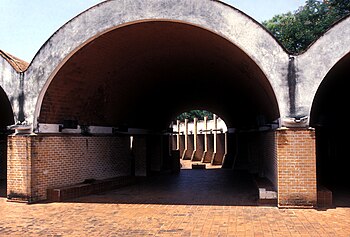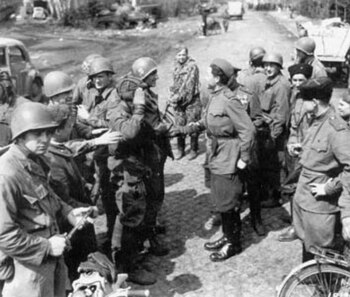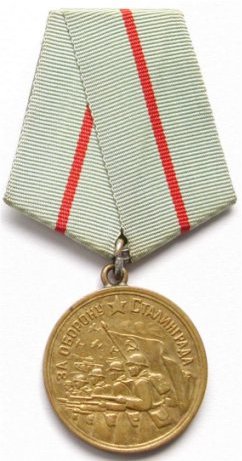|
|
| The grave of Jean-Paul Sartre and Simone de Beauvoir. Montparnasse Cemetary, Paris. (Photo credit: Wikipedia) |
|
|
| English: Robert Harris in Cologne on November 19th 2009 Photo credit: Wikipedia) |
One thing that is kind of obvious, but is nevertheless
repeatedly capable of surprising me, is
to discover how many books there are. Literally, there are millions and millions
of them, and each time one goes into a well-stocked bookstore one is exposed to
many thousands of these millions, enough to keep any reader busy for the rest
of his life should he choose to read every book in the place.
There have been some characters
in literature who have chosen to do just that: one thinks of a character in, La Nausee
Jean-Paul Sartre’s novel (still regarded many years later as one
of the essential texts of existentialism), who, on his route towards total
abnegation, read every book in his local library in alphabetical order.
These thoughts have been brought
on because recently I visited the small library put together by the Foreign
Circle of Dubrovnik, Croatia, a library kept in a small room off the lobby of a
big hotel, and operated strictly on the honour system. We choose books, as many
as we wish, take them home, read them, and bring them back. The library works
well and it seems to be slightly larger each time I visit it: in fact, books in
other languages than English have become so numerous that they now occupy a
second room.
What I have noticed from my
reading prompted by this random selectivity is how often one comes across an
excellent writer whom one has never heard of before, and yet has an impressive
list of works to his or her name. I think that is how I first came across the British
writer Robert Harris, whose novel Imperium
constituted a biography of the great Roman orator and statesman Cicero, and was
such an astonishing work of research with its detail about ancient Roman life
as to take one’s breath away.
On this recent visit I came away
with half a dozen books, of which at least three are serious works of
literature. I will deal with them one by one:
Book No. 1: The English novelist, essayist and biographer Martin
Booth, was a name unfamiliar to me, but I quickly discovered he had had a 35-year career as a writer ending with his
death in 2004, during which he managed to produce almost 70 works --- novels, plays, children’s stories, poems, biographies,
you name it, he had the genre mastered.
The novel I have just read, Islands of Silence, published in 2003 by Dewi Lewis Publishing
of Stockport, a town that is part of the
Greater Manchester conurbation, has a somewhat mysterious subject in that it
deals both with physical islands off the Scottish coast, and the island that
is everyman (in defiance of John Donne, perhaps); but which also deals with
varieties of silence that are the real subject of the book. The hero is an archaeologist,
brought up under the rule of an unsympathetic, militaristic step-father, who,
for reasons extending beyond his unhappy boyhood, including bitter experiences
of war, prison, and work, eventually
adopts a posture of absolute silence, refusing to speak for the greater part of
his adult life.
The primary cause apparently was
that, while investigating the archaeology of a remote Scottish island, he came
across an ethereal young woman who, he found, had never learned to speak, but
could communicate only in cries she had adopted from animals. He fell in love with
this woman, or perhaps it would be closer to say in the idea of this woman,
since the closest he ever came to her was to hold her hand briefly, and be kissed
on the cheek by her. But it seems to have been the impossibility of
communicating with her, allied to his dreadful experiences as a conscientious objector in the Second World War, that reduced
him to the silence that led to his being confined in a mental institution, where he stayed,
understanding everything around him but never reacting to anything said to him,
for the rest of his life. A remarkable piece of writing, in fact which made me
wonder why I had never heard Booth’s name before.
Book No. 2: I also picked up my second Robert Harris novel, again,
like the first, Imperium, an
unusual, carefully researched and disturbing work. This one, The
Fear Index, was first published in
Britain in 2011, and purports to examine the importance of fear in human
decisions and behaviour. My problem with the book is that its main character,
Dr. Alexander Hoffman, is a cold fish, totally unsympathetic, although
apparently with dazzling intellectual attainments which he had managed to
parlay into a huge fortune. The many billions he controls he has accumulated through operating one of those immense hedge
funds of precisely the sort that brought the global economy almost to its knees
five years ago. The operation of these funds is explained by Harris as being
achieved in long term options, and at
the same time taking short options to hedge themselves against the possible failure
of their long options. (This is
double-dutch to me, and I am not sure I even understand it after it has been
explained. But what it seems to mean is
that while placing a bet on something, an investor at the same time invests in
the possibility of its failure, hedging against his original bet, in other words). In this way they build up immense funds, but
it seems to be a sort of ponzi scheme in which an investor buys stocks or bonds
and then on the basis of his ownership of them, he buys more, and more, and
more, until the while thing, top heavy, collapses, and brings him down.
Harris posits that Dr. Hoffman,
interrupted in his super-security home by an intruder who, in theory, could not
possibly gain entry, is hit over the
head with a blunt object, an event which gives rise in him of something he has
never previously had to deal with, the factor of fear. This is reinforced when he
receives in the mail a rare first edition of a book by Dickens, the sort of
thing he has made a practice of collecting. (One of the contradictions in this
man is that, while collecting rare book editions, he has forbidden the use of
paper in his vast business establishment: no one is allowed to do any work on
paper.) On investigation as to who might have sent him this book, he discovers
that he has apparently bought it himself, using one of his many bank accounts,
and this is a second unsettling occurrence that sends him off on a chase that
ends in tragedy, both for himself and the unfortunate people who have invested
their money with him to manage. In a process minutely described by Harris, his
business empire begins to unravel. (At one point Harris gives us a disturbing footnote
to say that the financial process described in the following pages is an exact
copy of what actually did happen on Wall street, during the global financial
breakdown in 2010.)
However, for all its
authenticity, Harris’s novel takes us to a denouement that I found pretty well unbelievable,
although it makes for an exciting finish (confirming Harris’s mastery of the
thriller genre), leaving us gasping in admiration of his superb writing skills, and his even more
impressive skills as a researcher of the subject he is writing about. Before
getting into fiction --- he has already written seven or eight novels and other
biographies and political-type books, for example, about Neil Kinnoch, the
former Labour party leader, Hitler, and others ---- he was a backroom boy
holding important positions in the
Labour party hierarchy under Tony Blair. I would recommend almost anything he
writes.
Book No. 3: The third writer I picked up at the library on my last
visit who can make a serious claim to literary quality is William Boyd, who
I had heard of, but never read until this, his seventeenth book Restless, published in 2006 by
Bloomsbury, of London. I found this a
totally gripping tale that begins in a deceivingly humdrum way with the visit
of young professional woman to her aging mother who lives in the country. As she
is leaving, her mother hands her a
manuscript, headed, The Story of Eva
Delectorskaya, and when asked who is Eva Delectorskaya, the mother says, “I
am.”
Thus the book is made up of alternating chapters
as her mother’s surprising history as a Russian-born woman who was recruited in
1930s Berlin to become a British spy is unfolded in the successive chapters she
hands to her daughter; followed by the daughter’s reaction to this hitherto
unsuspected mother, who she had thought she knew. It is a gripping read, inevitably
leading to the point where the mother involves her daughter in ending the
story, something she was reluctant to do, but which she carried out as
instructed.
The world of the spy --- it seems
a lunatic way to live a life, always on the lookout for discovery or betrayal ---
has interested me since I covered the case of Gordon Lonsdale, a Canadian
businessman arrested in London in the 1960s, to the amazement and incredulity
of his business partners, who thought it was all a monstrous snafu by the
security services. Lonsdale, however, turned out to be a colonel in the KGB
whose entire life had been devoted to training for his role as an undercover
Soviet spy. A married couple, called the Krogers, who were traced through him were equally
innocent-seeming purveyors of rare books, living in Ruislip, a nondescript
suburb of West London. On examination, they were found to be Morris and Lona Cohen, whose names were
found in the briefcase of Colonel Abel, when he was arrested in the streets of
New York in 1957, and who had worked as couriers for the Rosenberg spy network
until they disappeared following Col. Abel’s arrest. (Incidentally, Col. Abel was found to be
really Willie Fisher, born in 1903 in the United Kingdom of Russian parents,
and taken back to Russia in 1921, eventually to join the Soviet secret
services. He was sentenced to 45 years, but after four years was exchanged on a
Berlin bridge for Gary Powers, the pilot of a U2 spy plane who was shot down
and imprisoned by the Russians.)
William Boyd’s story is almost as
exciting and mysterious as real-life spy stories usually turn out to be, and
the two women characters he has created are both capable of retaining our
interest until the end of the book. I am definitely going to read some more of
Boyd’s sixteen other novels.
Books 4 and 5: A few years ago I enjoyed the detective novels of Robert B. Parker, whose gumshoe, Spenser,
appears in 40 of the 60 books he wrote in a 37-year writing career that ended
with his death in 2010 (of course, he was still in harness when he died,
working on yet another novel). Parker
had a formula for success. He was a very witty writer, created an amusing,
witty character in his tough guy Spenser, whose adventures sometimes seemed
more like fairy tales than accounts of real life. Spenser was always
accompanied in his most intense assignments by his friend Hawk, a monumentally tough, in fact completely unbeatable fighter who could always straighten out
anyone giving Spenser real trouble. But Hawk was not the only non-Caucasian
featured in Parker’s work, which regularly featured Mexican-Americans, Russians,
Ukrainians, Chinese, and gays, not to mention his long-term live-in girl friend who was almost
aggressively Jewish, something that was treated with amused acceptance by the
detective.
Of course, the work was variable,
one might say, as would seem inevitable in someone who wrote more than a book a
year. Of the two I picked up at the library, I thought Double Deuce published in 1992 was a lot better than Chance published in 1996. Double Deuce was the name given to a housing
project on the outskirts of Boston, dominated and terrorized by a teenage gang,
called the Hobarts after the street they lived on, and run by a teenaged hood
who went by the name of Major. Spenser
and Hawk decided, because of something unfortunate that happened to a friend of
theirs, a young woman who lived in Double Deuce, that they would clean up the
building. They had no idea how to go about it, so they simply parked in the yard,
and awaited developments. When Major appeared, they announced their intention
of having his gang move somewhere else, to his utter incredulity. They kept
this up, provoking various confrontations that Spenser knew Hawk would never
lose (Hawk lose to a bunch of undisciplined teenagers? Do me a favour!) until the desired effect was achieved. The book is a classic page-turner, and among
other virtues, it produces what to a foreigner seems like an extraordinary picture
of the underbelly of United States life.
I am a slow reader, but I whipped
through this one in an afternoon, lost in admiration of the skill shown by
Parker in keeping my interest.
Book No 6: A few years ago I read some of the detective novels of
Ross Macdonald, a Canadian-raised guy whose real name was Kenneth Millar, who eventually
settled in Los Angeles, where, from his home, he poured out a stream of books
until his death in 1983. His wife,
Margaret Millar, was also a well-known writer.
I never really did care for Macdonald’s tales of the US underworld, but
I picked up one of his at the library, deciding to give him another
chance. Unfortunately once again I
bogged down: the stuff was well enough written, but it moved too slowly for me
and I never managed to finish The
Underground Man, which I have discovered from the Internet was one of his most-admired
earlier works. Oh, well, you can’t win
‘em all.
Book No 7: This one, which I imagine might have been left behind by
a disgruntled or shocked
hotel guest,
was called
The Surrender, an Erotic
Memoir, by Toni Bentley, formerly a 10-year veteran dancer with the New
York City Ballet company, who, after injuries enforced her retirement, has
taken to writing, has published five books, as many anthologies, and countless
review articles in mostly serious American literary journals. As Wikipedia
rather primly says, this
book “caused considerable
notoriety upon publication in 2004 due to its subject matter: heterosexual sodomy and the author's celebration of
female sexual submission.”
The author – a beautiful woman, as most ballet
dancers are --- records how she was brought up an atheist, but was in her own
peculiar way in search of God, which search set
her off on a promiscuous series of encounters with almost 40 men, that culminated
in her finding a young guy who sodomized her so successfully, 298 times, she
recalls, that she believed she had at
last found God in that act. She
certainly can write in a kind of frenetic way, and has won international
renown, this book having been translated into eighteen languages, and having
been made into a play that has been performed in seven countries around the
world. I tired of the story about halfway through, found it all quite
un-erotic, and wondered what effect the production of such an apparently obscene
work might have had on her career, only to find it had catapulted her into the
ranks of writers recognized as serious by the best critics. Not for me,
however. I have to confess I was rather bored than excited, not the impact that
a really erotic work should have on a normal man, I would think.











